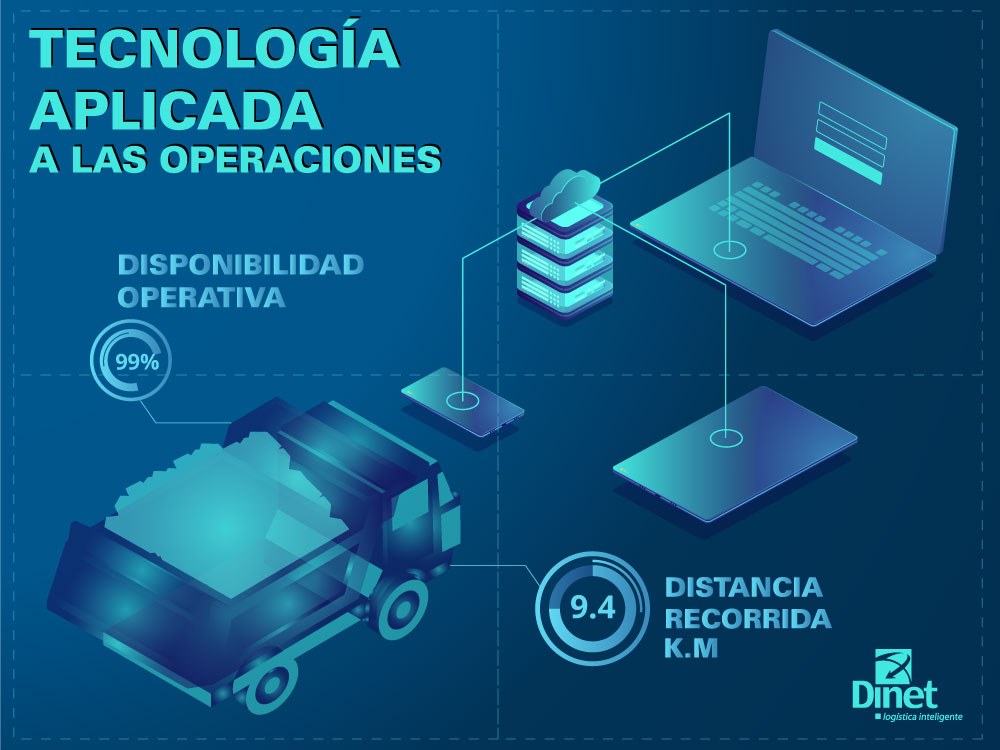Jorge Pérez Vásquez, Dinet's Commercial Manager
Nowadays, in many economic sectors we hear about digital transformation and/or automation; but only a few can take a glimpse of the real meaning of these concepts.
On this occasion, we will measure together the impact of these concepts on transportation, which is an important link in the logistics chain. As we all know, the transportation sector is a cross sector to the entire national economy, which means that any efficiency or inefficiency of this sector, automatically spreads to other sectors of the economy.
Digital transformation is the total automation of the necessary processes to manufacture or provide a service eliminating human interaction as much as possible, so in the case of the transportation sector, the technology of autonomous vehicles will be essential. Today there are autonomous vehicles operating in California, vehicles of well-known companies such as Google and Tesla, which still have aspects to perfect for their respective massification. However, there is no doubt that autonomous vehicles will become a reality in the next 20 or 30 years.
On the other hand, hybrid or electric engines will allow a significant cost reduction of great impact for the transportation sector, and consequently to the entire economy of the country.
However, if we talk about the short term, concepts of visibility and traceability of the service are necessary attributes nowadays for the transportation service.
Real-time visibility and traceability of a customer's load, through the entire logistics chain (not just transportation) through APPS or web pages with real-time client access , is an attribute that in our market, establishes a difference between logistics operators.
At DINET, we are aware of this challenge and we are developing, integrating and implementing, technological platforms that allow us to provide visibility and traceability for our customers and their cargo across the entire logistics chain (customs, container temporary warehouses, distribution centers, TRANSPORTATION, final points of sale). This applies to our customers from the retail sector, mass consumption , durable goods, and for those of the mining and construction sectors. It's worth mentioning that the use of technological tools such as a TMS (Transportation Management System) and the integration to a WMS (Warehouse Management System), are necessary requirements to achieve the visibility and traceability mentioned above. Technological applications on mobile devices for last mile distribution and delivery of products (ECOMMERCE) are also required to trace the cargo to the final delivery point, either for B2B or for B2C markets.
On the other hand, one of the factors that raises most of the transportation costs in our environment is the absence of a return cargo in the case of national distribution journeys. Technological applications, such as the Digital Freight Exchange, where transportation users (Freight Generators) and transport service providers (transportation companies) can coincide to close deals for transportation service transactions, would allow large national travel journeys to have a return cargo; therefore eliminating false freight and reducing the transportation cost.
Finally, there is visibility, traceability, freight exchange platforms, TMS, WMS, APPS in mobile devices ; all of these coexist and are important to digital transformation in the transportation sector. Some of them are already present in the logistic chains of our environment and others are being developed and implemented; however, digital transformation is not the application of technology to our processes per se, but rather the redesign of our processes and/or business model in a digital environment. I believe that internalizing this concept is key to achieve the success of companies in this new environment ( Netflix vs Blockbuster's case ).
